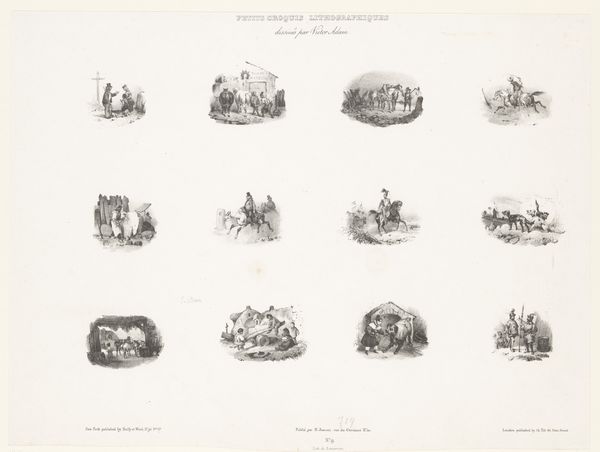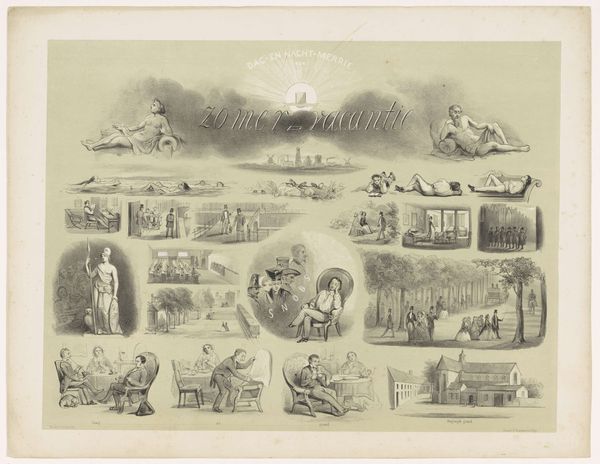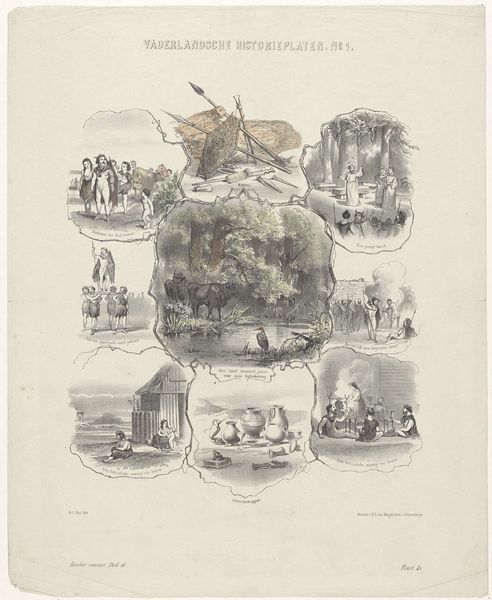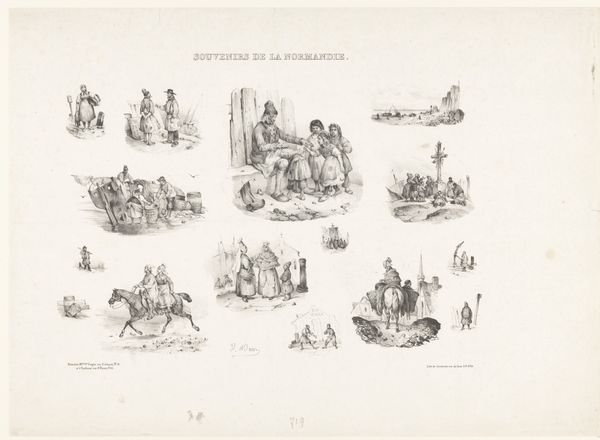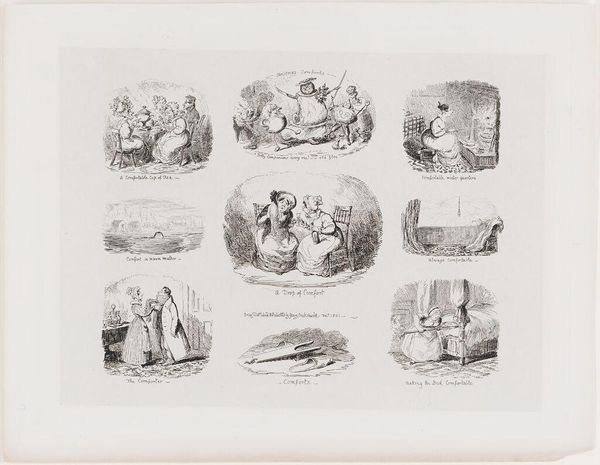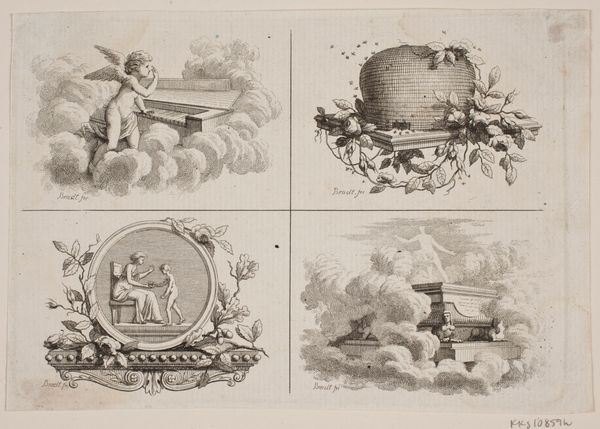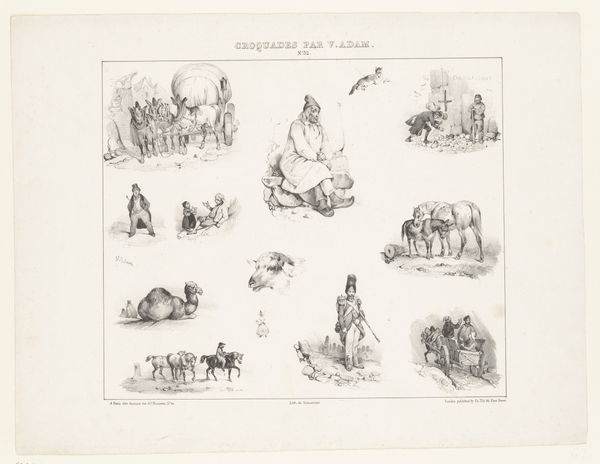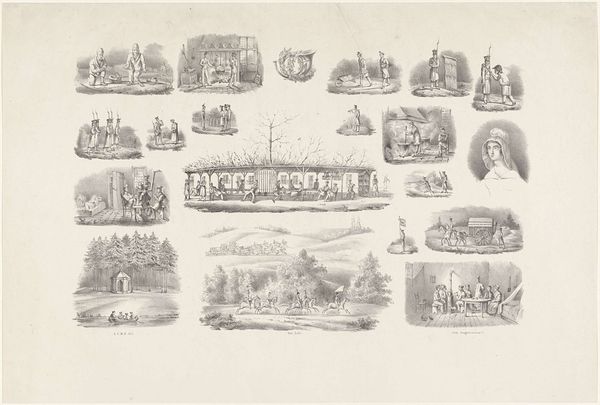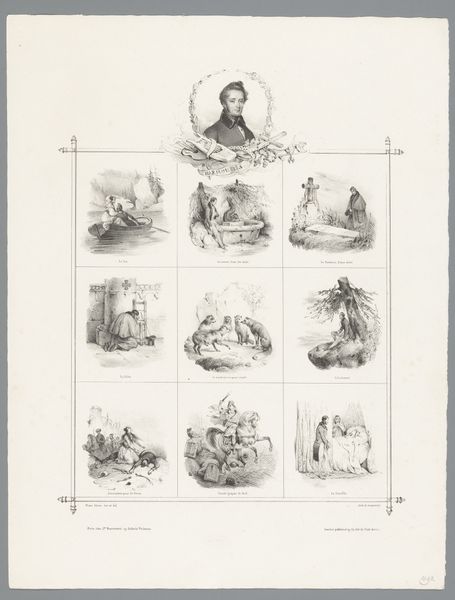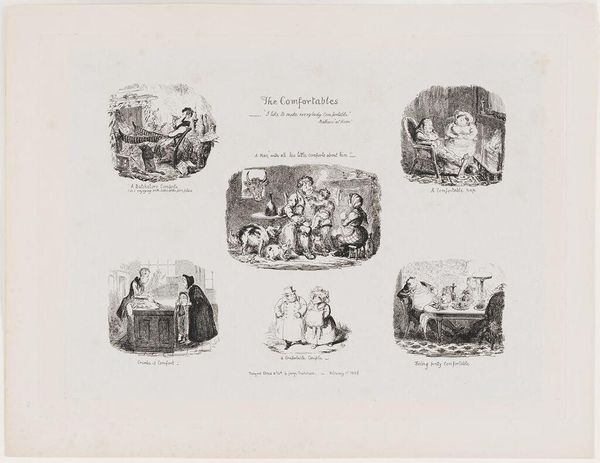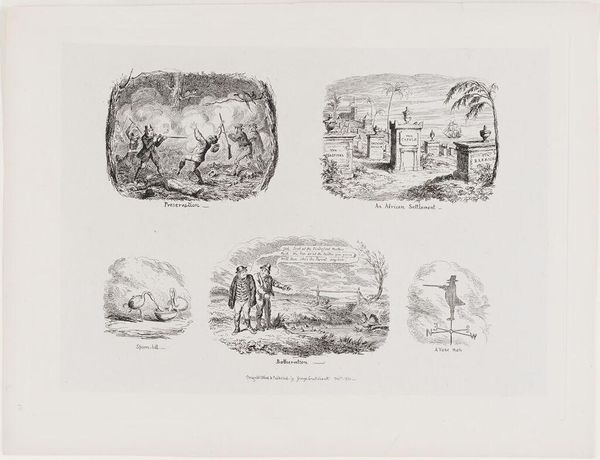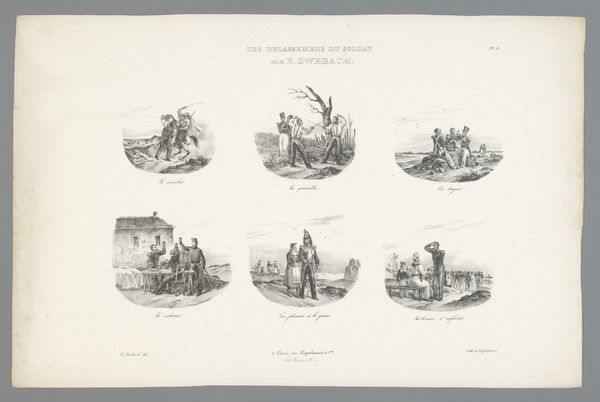
Blad met verschillende scènes en attributen uit het leven van de Bataven 1838 - 1840
0:00
0:00
graphic-art, print, engraving
#
graphic-art
#
narrative-art
# print
#
romanticism
#
history-painting
#
academic-art
#
engraving
#
realism
Dimensions: height 210 mm, width 292 mm
Copyright: Rijks Museum: Open Domain
Editor: This print, created by Johann Wilhelm Kaiser between 1838 and 1840, is called "Blad met verschillende scènes en attributen uit het leven van de Bataven" or "Sheet with various scenes and attributes from the life of the Batavians." It's an engraving, so it’s rendered in monochrome. It's crowded with small scenes, almost like a page out of an illustrated textbook. What catches your eye in this detailed compilation? Curator: I see a deliberate attempt to codify and visualize a cultural origin story. The Batavians, who were early inhabitants of what is now the Netherlands, become emblems here. Kaiser is pulling together fragments – burial rituals, gatherings, weaponry, religious symbols – as if piecing together a collective memory. Consider the idealized faces in the portrait busts, how do they strike you? Editor: They seem like Roman sculptures, lending a certain classical dignity. Is he suggesting a connection between the Batavians and classical civilizations? Curator: Precisely! The artist invokes the visual language of antiquity to ennoble the Batavians, giving them a lineage, a history worthy of respect. It's a powerful visual strategy to construct national identity, associating it with established cultural narratives. Notice how each vignette functions almost as a separate symbolic language? Editor: Yes, I see how he isolates elements – religious figurines, burial mounds – to become representative symbols. The act of gathering these relics almost becomes a form of storytelling itself, imbuing these symbols with narrative weight. What do you make of the prominent gatherings that are featured in the scene? Curator: I'm struck by the contrast between the chaotic assembly, likely intended to signify pagan rituals, and the more orderly scene depicting civic meetings. Both are being presented as core facets of Batavian society, and consequently Dutch cultural DNA, blending naturalistic renderings with staged national narratives. Editor: That makes sense! It’s fascinating to see how history is not just recorded but actively shaped through imagery, especially in establishing national identity. Curator: Indeed, and in unpacking the layers of symbolism, we begin to understand how historical memory becomes a powerful tool.
Comments
No comments
Be the first to comment and join the conversation on the ultimate creative platform.
